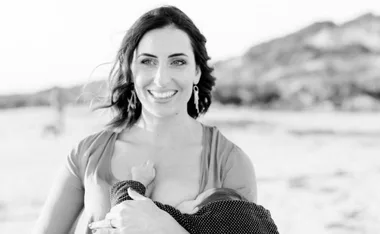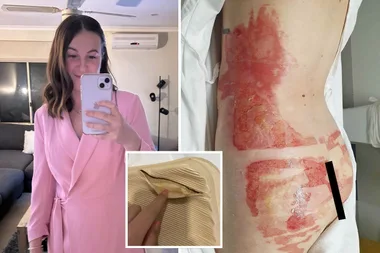When Fatima Ali* noticed her mother and grandmother whispering in a corner she thought they were planning her birthday treat. “My seventh birthday was approaching and there was a particular doll that I was hoping to get,” she remembers.
The truth was horrifyingly different. Rather than a trip to the shops to buy the longed for doll, Ali’s mother was planning for her daughter to be “cut” – a cultural practise more commonly known as type 1 Female Genital Mutilation (FGM) in which the tip of her clitoris was cut off with a razor blade.
Ali, who now lives in Western Sydney, can vividly recall the day that she became a victim of FGM. Having been taken to a private home within an East African community housing estate, Ali’s mother and aunt led her into a dark room.
“We were greeted by an old lady who talked to my mother, she told her that she could stay, but my mother said that she wasn’t strong enough and that she had brought my aunty to hold me down. I was very frightened,” she explains.
Ali was then told to get on to the table and remove her underwear. Her legs were spread and held down. “I saw the old lady remove a razor blade, and then I felt the most horrendous pain. I felt like she had reached inside my chest and removed my heart. I remember screaming, and screaming, but I couldn’t hear myself, it was like a nightmare.
“It was over a couple of minutes later, my aunty helped me stand up, but my legs were shaking – I had no idea what had happened to me. I felt totally betrayed,” says Ali.
In Ali’s Shia community, FGM is a secretive practice and young women like Ali, who is now 33, were forbidden from discussing it. “Nobody talked about it, it wasn’t until I was an adult that I realised what had happened to me was wrong,” she says.
Ali is one of a staggering 125 million females alive today who have undergone some degree of FGM. In its most extreme form, girls are subjected to the removal of the clitoris and labia, and the sewing up of their vagina, leaving only a small opening for urine and menstrual blood.
Aside from obvious trauma, there are several long term effects of FGM; pain, difficulty passing urine, recurrent infections, painful intercourse, inability to have intercourse, difficulty during childbirth, urinary fistula and others.
While FGM has never been a traditional practice in Australia, an increase in migration from FGM affected countries means that it is happening in our region.
In fact, campaigners at No FGM Australia estimate that with up to 1100 babies per year being born to women who are likely to have undergone FGM in their native countries, as many as three girls a day born in Australia could be at risk of FGM.

Khadija Gbla, Sybil Williams and Paula Ferrari founded No FGM Australia in 2012.
FGM has been illegal in Australia since the 1990s but because of the clandestine nature of the practice very few prosecutions have been made until very recently.
In November 2015 a landmark trial in Australia saw three people convicted for FGM. The outcome of the case has been a huge victory for anti FGM campaigners, but with overwhelming evidence that the practice is still rife and that many girls are being taken overseas for the procedure there is still a long way to go.
So what can we do? Paula Ferrari, co-founder of No FGM Australia says that we should think of FGM as a collective problem and that everyone in our society should know about it.
“The little girls do not have a voice, so we need to be their voices. If their parents are not protecting them then this becomes the responsibility of the state. As such we must have stronger and more systematic measures in place,” she says.
Ferrari thinks that one way to raise awareness would be to add FGM to the national curriculum and make it a mandatory part of all teacher-training. “All teachers should know about FGM, from pre-service training through to experienced teachers,” she says.
One of the big challenges in the fight to end FGM is the cultural sensitivity around the practice. Ferrari notes that professionals such as doctors and teachers may avoid reporting FGM cases because of the stigma of speaking out against a cultural practice.
In addition to this she believes that as a society we are too prudish to talk openly about private body parts.
“We need to end this silence, end the stigma and stop treating girls and women’s clitorises and vaginas as too shameful to talk about.
“If we saw a child come back from a holiday with their eye poked out for “cultural” reasons, would we let it continue? No, as soon as we saw this practice, as a country we would act quickly to inform the parents it is unacceptable in Australia, we would pass a law banning the poking out of eyes and then we would police it until it was eradicated,” she says.

Women’s collective: ActionAid has supported women and girls to form collectives, where they talk about their rights, and speak openly about FGM. These collectives have provided a forum for them to stand together against the practice.
Photo credit: Miranda Grant/ActionAid
Dr Sally Henderson is the senior program coordinator at ActionAid and has done extensive work with women in Kapchorwa, eastern Uganda. She says that despite many campaigns to end it, FGM is still seen as a necessary step in securing the reputation of young women and preparing them for marriage.
“The men maintain that it is only by using FGM that they can ensure their wives will not stray and that their daughters will be perceived as being honourable members of the community,” Dr Henderson explains.
Many of the Kapchorwa women that ActionAid have worked with claim that FGM brings them respect in the community and worry that renouncing it will bring them condemnation. “Shifting these cultural attitudes is the biggest hurdle to ending FGM,” says Dr Henderson.
Uganda is one of 18 African nations that have outlawed FGM and some perpetrators have been arrested. But the secrecy that surrounds the practice means that the laws are difficult to enforce. Rather than focussing on the law, ActionAid’s approach has been more personal, collaborating with women in the villages to form collectives.
“The collectives provide a forum for women to talk together about their rights, and to voice their experiences of gender-based violence and FGM, and to devise and lead campaigns to resist these practises.
“As a result, the women we work with have established strength through solidarity. The women have led local campaigns within their communities – facilitating public discussions and events such as plays to raise awareness of FGM and bring about an end to the practise,” Dr Henderson explains.
The results have been exceptional. By sharing their stories with one another the women in the collectives have become empowered and the cultural attitudes that have underpinned the practice of FGM are starting to change.
“Where in the past we have seen women defend FGM, we are now seeing them stand up and say they will no longer stand for it, and won’t allow their daughters to be cut. This is huge progress,” notes Dr Henderson.
While Dr Henderson is hopeful that FGM will be eradicated she is also mindful that complex issues such as poverty and women’s disempowerment also play a huge role in ending the practice.
“When women are economically empowered and informed they are better equipped to resist practices such as FGM. Therefore overcoming poverty and making sure that women are economically, socially and politically empowered is critical in eradicating FGM.
“This is an enormous task, and requires international commitment to overcoming poverty – and moreover, protecting and upholding women’s rights and achieving gender equality all over the world,” she explains.
Fatima Ali vehemently agrees that gender equality will play a key role in eradicating FGM. However she is less optimistic that we will see an end to FGM in our lifetime. “I hope that it ends with our children, but I don’t think it will end in my lifetime,” she says.
“There is too much ignorance out there. How many minds can we change?”
The UN estimates that if current rates of FGM continue a colossal 86 million women and girls will experience the practice by the year 2030. If the fight to end FGM is to be successful, then a lot more work needs to be done.
**Name has been changed*
You may also like…











